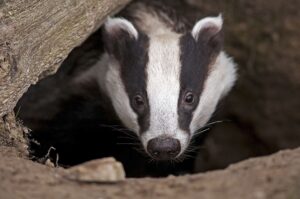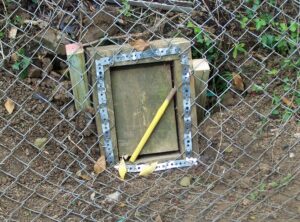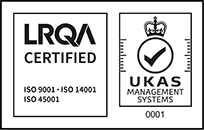Call us free on 0808 168 9540
Call us free on 0808 168 9540

Badgers and their setts are protected under the Protection of Badgers Act (1992) which makes it an offence to kill, injure, interfere with or take a badger. It also makes it an offence to damage or interfere with an active sett unless a licence is obtained.

A badger survey assesses the presence/absence of badgers on a site. Where possible this survey should extend beyond the site to identify offsite setts. These could include setts close to the site, or offsite setts that may be connected to the site. Any onsite or nearby setts could have an impact on proposed development or landscaping works at the site. A badger survey can utilise various techniques such as:
A continuous period of no less than 21 days could be required for some setts in order to establish any badger activity.
Badgers are very sociable animals and live in clans, which are normally mixed-sex groups of between four to eight animals living in undergrounds setts. However, some main setts can be much larger. While badgers live in clans, they forage for food independently.
Badgers are territorial and often try to return to existing or excluded territories.
Badger tunnels can extend several meters underground and connect to a series of chambers.
Badgers can create different types of setts:
Badgers are protected in the UK by the Protection of Badgers Act 1992, Schedule 6 of the Wildlife and Countryside Act 1981 (as amended) and by the Animal Welfare Act 2006.
In Scotland, badgers are protected by The Protection of Badgers Act 1992 (Scottish version), although there have been changes to the law in Scotland in 2004 and 2011 with much wider culpability (The Nature Conservation (Scotland) Act 2004, and the Wildlife and Natural Environmental (Scotland) Act 2011).
If you are found guilty of committing any of the following offences, you could be sent to prison for up to 6 months, and get an unlimited fine:
By law, a badger sett includes the entrance holes, tunnels and chambers.
Badger surveys can be undertaken all year round. Sometimes sett entrances are easier to see in winter when the surrounding vegetation has died back.
If a sett needs to be closed, or disturbed, (e.g. due to proposed construction works), then a licence is required. The works covered by the licence have to take place and be completed in the time window of 1st July to 30th November.
A badger survey can be done at any time of the year.
If you have badgers on your site and they are not impacting you, then enjoy the fact that you have badgers!
Badgers may be using your site for different reasons:
If a badger is causing structural damage to a building, then a licence can be obtained to close the sett.
If construction works associated with a planning application impact a sett, then, following the granting of planning permission, a licence can be obtained to close, temporarily close, or to otherwise disturb the sett. However, if a main sett is being closed then an artificial sett will have to be built. If a secondary or annex sett is being closed, it is important to demonstrate that the badgers on your site are connected to a main sett off the site.
If your development plans are within 30m of a badger sett, either on or off your property, then there could be an impact on your plans. You will also need to ensure that any important foraging areas for badgers are not destroyed, and these could be farther than 30m active from setts.
Badger setts are a series of holes in the ground. The classic description is that the sett entrances look like the letter ‘D’ on its flat side. The entrances are larger than fox or rabbit holes. As a guide you should be able to turn your hand around without touching the sides of the entrance. There are normally well worn paths, recent soil heaps, potentially old bedding around the entrances, or badger hairs and/or footprints in the area. Badgers also use latrines which are usually not far from the sett entrances and are, understandably, fairly easy to locate.
The badger sett will include the entrance hole, tunnels and a series of chambers, which the badger will often put old vegetation in, such as grass, as bedding.
Do not disturb it. Disturbing badgers in their setts is a crime which could result in a fine and a prison sentence.
If the sett is on a proposed development site or if its impacting your land in an undesirable way, then arrange for a suitably qualified ecologist to conduct a badger survey. Note that if badger activity is found on a development site during the planning process, a repeat survey will usually be required to ensure that the situation hasn’t changed by the time construction works start. This is because the active status or the classification of setts can change over time.
The general guidance is to stay 30m away from a badger sett. However, this is guidance, and the distance depends on the site conditions and the type of work or activity being carried out. If a disturbance licence is obtained, then work can sometimes be carried out within 30m of an active sett, but only if working methods can be implemented that are sensitive to badgers.
Artificial setts can be created s part of the process to move badgers from a sett that is to be closed to the new sett. However, badgers are the best engineers of their own setts, so this is a last resort method. It is always preferable to avoid disturbing a main sett.

You can only close a badger sett if a licence to do this has been obtained.
For a planning application, a badger survey will need to be submitted with it, requesting a licence to close the sett. Once planning permission is granted, a new site survey needs to be carried out to ensure that site conditions have not changed. A licence application to close the sett can then be made.
The time window when a sett can be closed is between 1st July and 30th November. Closing a sett usually involves the installation one-way gates and the monitoring of the sett entrances for a minimum of 21 days, after which the sett can be removed. Other mitigation measures might be required, depending on the licence, such as constructing an artificial sett and/or surveying and adapting the ground to make it as easy as possible for the badgers to find their new home.
If a badger is impacting your property, you can apply for a licence to prevent damage. This licence does not need planning permission.
Contact us if you have a badger issue. We can carry out badger surveys and advise on what the best course of action is, depending on the site requirements and any future plans you might have for the affected area.










